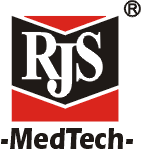This Guiding Opinion is essentially an implementation plan for CFDA¡¯s 2008 Trial Measures on Medical Device Adverse Event Monitoring and Re-evaluation (¡°Measures¡±), which create the basic framework and requirements for event reporting and control measures, as well as for manufacturer re-evaluation of the safety and effectiveness of devices once events have occurred. In those Measures, a ¡°medical device adverse event¡± is defined as any type of event that occurs in the course of normal use of an approved medical device, which is made in accordance with quality standards, and the event causes or could cause bodily harm to humans.
China already has a network for monitoring both drug and medical device adverse events, including an online platform for reporting them and reporting on their resolution. However, the Guiding Opinion is part of a more comprehensive effort to improve the safety of drugs and devices on the market, which is set forth in the Twelfth Five Year Plan on Drug Safety. This Plan also covers medical devices and was released in 2012. Although it is too early to predict the Guiding Opinion¡¯s effect, it has the potential to result in an increase in reported events.
In the first phase of the plan (2013-2014), local governments at or above the county level shall complete the work of ¡°establishing¡± and ¡°perfecting¡± their medical device adverse event technical monitoring institutions. These ¡°monitoring institutions¡± are part of the local governments. Under the 2008 Measures, these institutions were created to receive reports on, evaluate, respond to and report on adverse events. A central monitoring institution under CFDA provides guidance to the local institutions on their work. Local governments should set aside the necessary funds for these institutions and ensure that they have the appropriate ¡°personnel allocation.¡± This personnel allocation will include individuals with technical knowledge in the areas of biomedical engineering and medicine. In addition, local governments must make sure that these institutions have proper facilities and equipment to conduct monitoring activities.
Also in the first phase, the monitoring institutions will build their capacity to monitor and evaluate adverse events and to manage information related to them. The monitoring institutions must also develop a ¡°coordination mechanism¡± with the local branch of the National Commission on Health and Family Planning, which governs hospitals and clinics, and the medical profession. They will gather information both through this channel and through manufacturers and distributors, which have a responsibility under the 2008 Measures to proactively discover and report events. The Guiding Opinion requires that monitoring institutions ¡°manage¡± information, which includes its release to other areas of government and to the manufacturer and distributors, but it does not set forth specific circumstances under which the institutions must release this information or make it public.
The first phase of the plan also calls for the government to devote resources primarily to Class III devices, which other regulations define as posing the highest risk to humans. Specifically, the monitoring institutions will focus on comprehensive coverage of adverse events related to manufacturers of Class III medical devices and ¡°basic¡± coverage for distributors of Class III devices. The Guiding Opinion does not articulate what ¡°comprehensive¡± and ¡°basic¡± coverage mean, leaving localities some freedom to implement monitoring. But it does state that local governments should institute daily monitoring of Class III devices, which will include, among other aspects, a ¡°zero report¡± system ¨C i.e., a system in which even reports of ¡°no events¡± are required. It also includes a brief and undefined reference to the establishment of a ¡°sentinel monitoring¡± method at certain ¡°entities¡± with appropriate ¡°abilities¡± and ¡°conditions.¡± In the first phase, manufacturers of Class III devices and distributors of ¡°high risk¡± devices shall also report ¡°suspicious adverse events¡± via the central reporting website www.adr.gov.cn. The Guiding Opinion does not go into further detail about what manufacturers¡¯ and distributors¡¯ specific responsibilities will be in these respects. Manufacturers should look for CFDA and local authorities to make that clear in the future. The Guiding Opinion does not change the responsibilities of manufacturers and distributors to report events to the monitoring institutions, as set forth in the 2008 Measures.
Otherwise, the government shall devote resources to monitoring adverse events at level two and above medical institutions (e.g., hospitals). These are the top two tiers of hospitals and clinics in China, with the most freedom under the law to perform complex surgical procedures.
The second phase of the plan is in 2015, and it is basically a continuation of the work begun in the first. The Guiding Opinion gives only very basic details regarding this second phase of the plan. During the second phase, the local governments at the county level should establish complete coverage for the whole country via monitoring institutions. These institutions should continue to utilize the two complementary methods of ¡°daily monitoring¡± of adverse events and targeted monitoring aimed at more serious threats. Every year, the monitoring institutions will take the data from the daily monitoring and develop a plan for targeted monitoring in the next year on the basis of that data.
The Guiding Opinion does not specifically change the responsibilities of stakeholders for monitoring their own adverse events. The Guiding Opinion notes briefly that manufacturers remain the ¡°first responsible parties¡± to proactively monitor adverse events and fulfill their legal responsibilities, such as those under the 2008 Measures and other relevant guidance documents. However, the Guiding Opinion does signal that CFDA and the local governments at different levels (e.g., county/province) will be paying closer attention to monitoring in the future. Each local government will have some freedom to supervise in its own way. Over the course of the next two years, industry should be aware of institutional changes in the localities in which they do business, as well as new local rules or guidance documents that might emerge on medical device adverse events.

